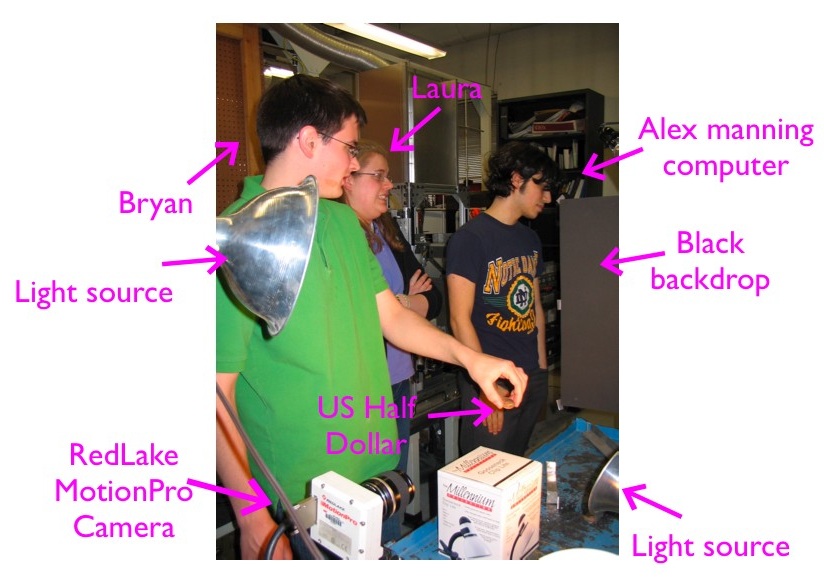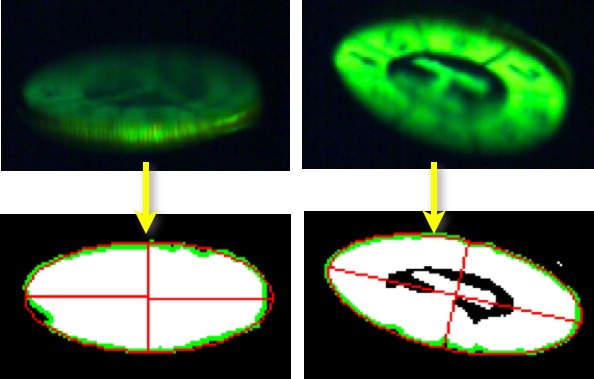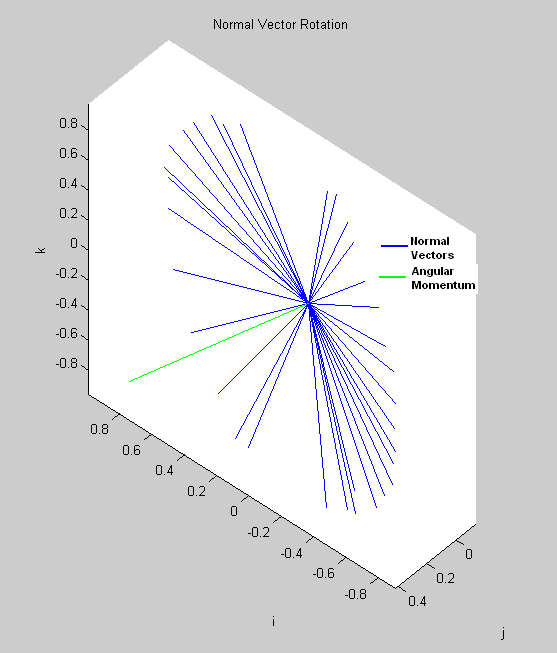
The bias arises from the interaction between two types of angular motion: flipping end over end, and the rotation of the coin's face. This is related to an angle theta defined from the initial conditions. This effect does not diminish as the coin is thrown higher or with more vigorous rotation and is not due to any asymmetry in the minted coin. This bias arises because the coin precesses as it tumbles, and is a straightforward, though novel, application of results due to Euler in about 1750.
We reproduced experiments in which flipping coins are filmed using a high speed video camera in the laboratory of Edward Dreizin, NJIT Dept. of Mechanical Engineering (Redlake MotionPro at 500 frames/sec. The capstone lab has since acquired its own camera)
Here are some of the students performing experiments in 2005:
Each frame in a movie is analyzed using the Matlab Image Processing toolbox and the results are combined to reconstruct the orientation of the moving coin over a number of rotations. At each frame, the color image is converted first to grayscale, then to pure black and white. The edge (green) is then detected and fit to an ellipse (red) via least-squares.

Using this ellipse (in red above), we may reconstruct the direction in three dimensions in which the normal vector to the coin points. Over the coin's motion, the normal vectors sweep out a cone whose central axis points in the direction of the conserved angular momentum.

As shown by Diaconis et. al, if the coin's motion were a "pure flip" then all the normal vectors would be coplanar, i.e. the angle theta between the angular momentum (green) and the normal vectors (blue) would be 90o. The bias arises because theta is not a right angle. For the experiment shown above, the coin should have a 50.3% chance of landing heads up. (This of course does not take into account any bouncing after the coin hits the ground.)
The experiments are very simple, yet analyzing them required a great deal of mathematical knowledge and computational sophistication.
Reference: Persi Diaconis, Susan Holmes, and Richard Montgomery, Dynamical bias in the coin toss, SIAM Review 49 (2007), 211–235.